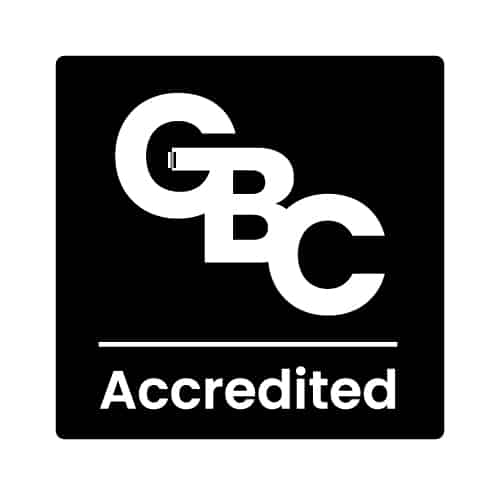If you are looking to improve your career trajectory and climb the corporate ladder, then it’s vital you demonstrate that you’re the right person for the job. In this blog, we’ll look at how to demonstrate leadership skills and ensure you don’t get overlooked.
Ever feel as if you’re caught on a hamster wheel? The endless cycle of long working hours and an ever-growing workload? Add to this, perhaps, responsibilities outside of work, a family for example, and it’s no wonder overwhelm rears its head. It can be difficult to find time to think about your career path, let alone do anything about it. This in turn leads to procrastination; it’s easier to stick with the known, even though you know you are capable of so much more than it is to find the time and space to explore an alternative.
And when the opportunity for career growth does arrive, how can you demonstrate that you are the right choice or even an option? Here are 9 key ways that you can demonstrate leadership capability.
1. Understand Organisational Culture.
What qualities does your organisation value? Is it ambition? Is it visibility? By getting to know the company’s values you can ensure you demonstrate them in your communications, in your relationships with others, and in your day-to-day activity.
2. Switch Your Perspective.
When you’re working IN your organisation, it’s easy to get stuck in seeing things from the limited or “blinkered” perspective of your current position. One of the key ways to demonstrate leadership potential is to switch that perspective to the much wider view of the company. The benefit of this “bigger picture” view is that it can help you make better, more strategic decisions as well as foster a greater understanding of difficult change.
3. Build Confidence.
The most effective leaders are those who have developed sufficient self-awareness that they know their strengths and recognise their weaknesses. Strengths can be built upon, and awareness means you know which activities to engage in that will allow you to shine. Knowing where your weaknesses lie can, in turn, help you to develop those weaknesses, perhaps through further training or working with a coach or mentor. However, knowing your weaknesses is often enough, particularly if they can be mitigated by your strengths – If you can focus your work on your strengths, then do so. If not, then develop your weaknesses to an acceptable level – don’t attempt to be an expert in everything.
4. Take Responsibility
Another key way to demonstrate leadership qualities is to take responsibility and to be accountable where both successful outcomes and mistakes are concerned. Remember that often mistakes occur not because the original concept was flawed, but due to poor execution, for example, or other external factors. By being accountable, you also can act proactively to analyse the “why” behind the results and to suggest improvements.
5. Lead Upwards
Leadership involves understanding risk, engaging people, and building strategies.
When both present and effectively listening to others, you are more able to identify any gaps in these areas. If you are then able to develop your skills to match any of these gaps, you not only demonstrate initiative but will help yourself to get noticed for the right reasons.
6. Build Your Visibility.
Shrinking violets beware! Whilst senior team members are often too busy to represent the organisation at events, write blogs, be guest speakers, or volunteer for committees, this gives you a valuable opportunity to demonstrate leadership skills and potential. Networking events are a great way to get known, but also offer low-cost marketing opportunities for your organisation. By creating blog content, you can also demonstrate your thought leadership, whilst driving traffic to your organisation’s website.
7. Embrace Diversity.
A good leader understands that diversity is not just about age, gender, race, ethnicity, and sexual orientation. It’s about ensuring a mix of IQ as well as EQ and embracing diversity in personalities, ideas, and approaches. This diversity creates so many more opportunities for growth within any organisation and that’s where true innovation lies.
8. Have Strong Boundaries.
Saying “No” may sound counter-intuitive, but a strong leader knows how to ring-fence their time, how to delegate, and how to say “No” when a no is needed! Remember, clarity is kind, not only to others in that they understand where you stand but also to yourself. You cannot give your best to your role if you’re burned out.
9. Find A Mentor.
I often work with clients as a sounding board to their ideas, whilst offering clarity on the vision of where they want to be, in supporting them in the development of their leadership skills and advancing their career goals.
How to Demonstrate Leadership Skills – In Summary.
We have explored some of the hard and soft skills that a good leader needs, but it is also worth making the point that you need to communicate your desire for progression. This could be as simple as voicing your wish for promotion, or it could be a more subtle approach. Perhaps demonstrating that you are capable of the increased responsibility by undertaking some of the tasks associated with it. What is important overall, is about understanding others’ perception of you; how they turn to you for advice or for inspiration. What matters most is how you develop your skills, and how you interact and share your experiences and knowledge with others. That is the mark of a good leader.
If now is the time to invest in your business growth or if you are looking to gain clarity to progress up the career ladder and ensure your leadership skills are top-notch, I can help. With 25+ years of experience, gained in many different sectors, from legal to coffee merchants, and having owned several successful businesses of my own, I can support you, coach, and mentor you to be the best version of yourself. Book a call and let’s chat through the options.









